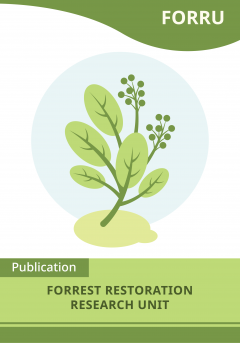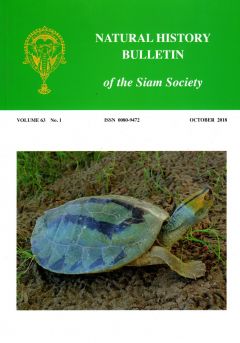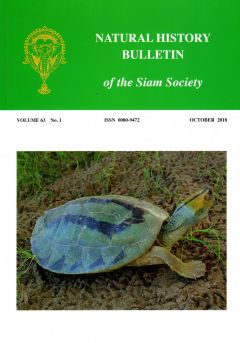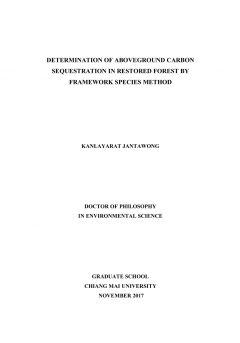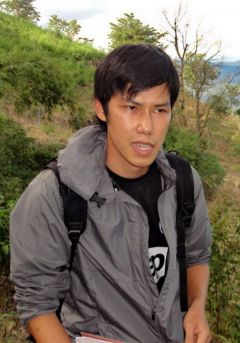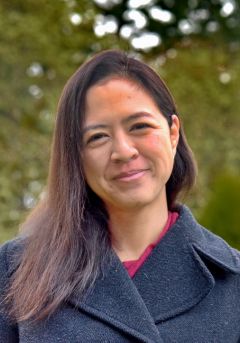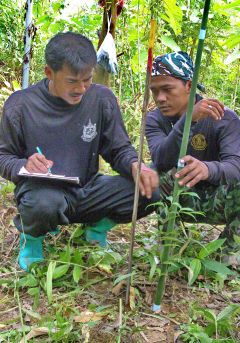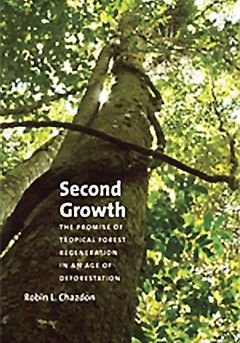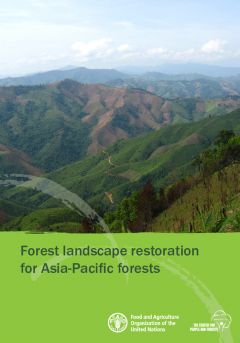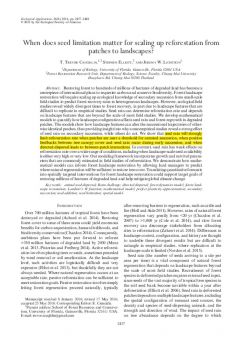Extensive study has been made by FORRU, local forestry staff and students of Wailailak University of the trees of the lowland forest in the remaining range of Gurney’s Pitta in southern Thailand, including the identity of species and their flowering and fruiting phenologies. Over 180 species of tree have been identified and reference and voucher collections made of leaves and seeds. Phenology trails have been established and over 200 trees individually labelled.
Detailed measurements of sapling growth rates have been made in the tree nursery to identify potential framework species for forest restoration, and field visits have established the identity of trees capable of regenerating in deforested areas. Three different forest restoration methods have been trialled and closely monitored at experimental plots; accelerated natural regeneration, replanting with framework species and direct seeding. All three show potential for wider forest restoration. A technical guide to forest restoration methods in the area has been produced.
Moreover, a local school curriculum “Gurney’s Pitta and Nature” was developed mainly by BCST and its partners. The curriculum aims to i) establish systematically basic learning about Gurney’s Pitta, ii) promote this subject at higher levels of education, iii) promote Gurney’s Pitta as a flagship species for conservation and iv) raise awareness of local people on Gurney’s Pitta conservation.
21: The ecology and technology of accelerating forest ecosystem recovery
Whilst the science of restoration has improved greatly over recent years, the technologies for implementing it remain primitive. Nearly all accessible land is already used for agriculture. So,...
22: The interface between forest science and policy—a review of the IUFRO international and multidisciplinary scientific conference 4–7 October 2016: forestry-related policy and governance: analyses in the environmental social sciences
ABSTRACT: This commentary uses the experience of attending the “Multidisciplinary Scientific Conference on Forestry-related Policy and Governance” to contrast the lack of progress with...
23: Where science meets communities: developing forest restoration approaches for northern Thailand
ABSTRACT: This paper contrasts lessons learned from two forest restoration research projects in Doi Suthep-Pui National Park, near Chiang Mai City, northern Thailand, which combined science with...
24: Determination of aboveground carbon sequestration in restored forest by framework species method
ABSTRACT: Tropical deforestation reduces the global terrestrial carbon sink and substantially contributes towards global climate change. Conversely, tropical forest restoration could help to...
25: Development of New Techniques of Seed Storage and Direct Seeding of Native Tree Species for Tropical Forest Restoration
ABSTRACT: Direct seeding (sowing seeds directly into ground) is a low cost method of forest restoration, which could potentially be applied to aerial seeding and replace conventional tree...
26: Limitations to Seedling Regeneration on Tropical Forest Restoration Plantations in Northern Thailand
ABSTRACT: This dissertation investigated potential ecological limitations to seedling regeneration in young, seasonally dry, evergreen forest restoration plantations in northern Thailand. We...
27: Selection of native tree species for restoring forest ecosystems
ABSTRACT: The framework species method is a well-established tropical forest restoration technique, which involves planting 20-30 indigenous forest trees species, with high survival and growth...
28: Second Growth : The Promise of Tropical Rain Forest Regeneration in the Age of Deforestation—Review
Robin Chazdon In Second Growth, Robin Chazdon conveys the message that tropical forests are “malleable” and should be helped to achieve their maximum potential for regeneration wherever...
29: Forest restoration at the landscape level in Thailand
Thailand is located in the Centre of the Indochina Peninsula, with a total land area of 513,115 sq km. Due to variations in climate and physiographical characteristics, various types of forests...
30: When does seed limitation matter for scaling up reforestation from patches to landscapes?
There's a neat little app that goes with this paper. Check it out - https://t-trevorcaughlin.shinyapps.io/ReforestationDynamics ABSTRACT: Restoring forest to hundreds of millions of hectares...

